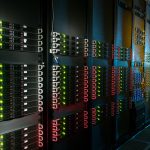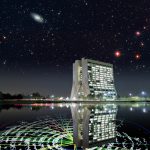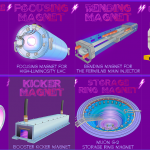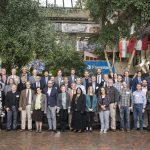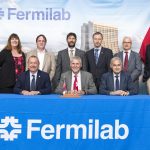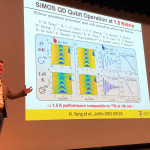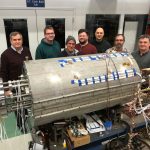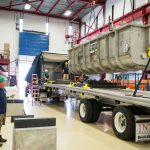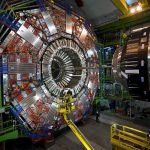Leah Hesla
Leah Hesla is a science writer at Argonne National Laboratory and former senior writer in the Fermilab Office of Communication.
An ensemble of soprano, strings, piano and electronics gives voice to the mysterious neutrino in David Ibbett’s latest musical work as Fermilab guest composer. Mapping the waves of neutrino oscillation onto melodies played by the strings, Ibbett sonifies a neutrino phenomenon typically represented in abstract mathematical expressions. Hear the performance and Ibbett’s comments in this four-minute video.
Missing March Madness? Let Fermilab fill a small part of the void created in these times of social distancing and shelter-in-place. Participate in Fermilab’s sendup of the NCAA tournament: March Magnets. Learn about eight different types of magnets used in particle physics, each with an example from a project or experiment in which Fermilab is a player. Then head over to the Fermilab Twitter feed on March 30 to participate in our March Magnets playoffs.
The USCMS collaboration has received approval from the Department of Energy to move forward with final planning for upgrades to the giant CMS particle detector at the Large Hadron Collider. The upgrades will enable it to take clearer, more precise images of particle events emerging from the upcoming High-Luminosity LHC, whose collision rate will get a 10-fold boost compared to the collider’s design value when it comes online in 2027.
Today’s quantum computing processors must operate at temperature close to absolute zero, and that goes for their electronics, too. Fermilab’s cryoelectronics experts recently hosted a first-of-its-kind workshop where leaders in quantum technologies took on the challenges of designing computer processors and sensors that work at ultracold temperatures.
The first major superconducting section of the PIP-II accelerator has come to Fermilab: the first of 23 cryomodules for the future accelerator. The cryomodules’ job is to get the lab’s powerful proton beam up and moving, sending it to higher and higher energies, approaching the speed of light. This first cryomodule also represents a successful joint effort between Argonne National Laboratory and Fermilab to design and produce a critical accelerator component for the future heart of Fermilab.
A new machine learning technology tested by Fermilab scientists and collaborators can spot specific particle signatures among an ocean of LHC data in the blink of an eye, much faster than standard methods. Sophisticated and swift, its performance gives a glimpse into the game-changing role machine learning will play in making future discoveries in particle physics as data sets get bigger and more complex.

